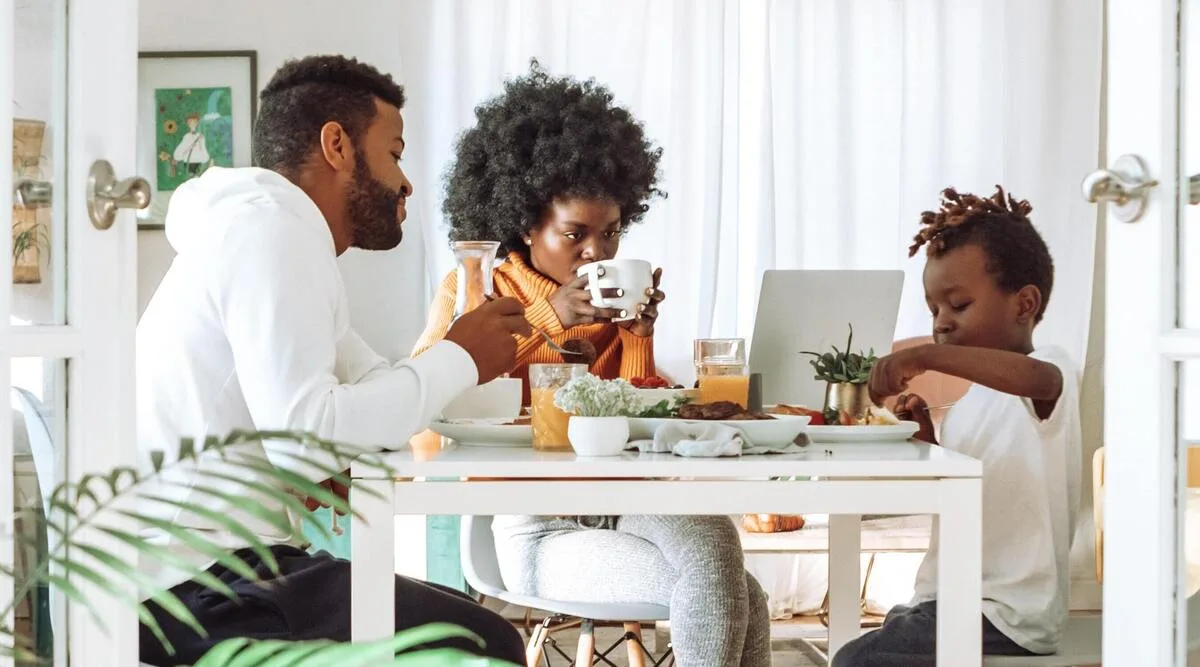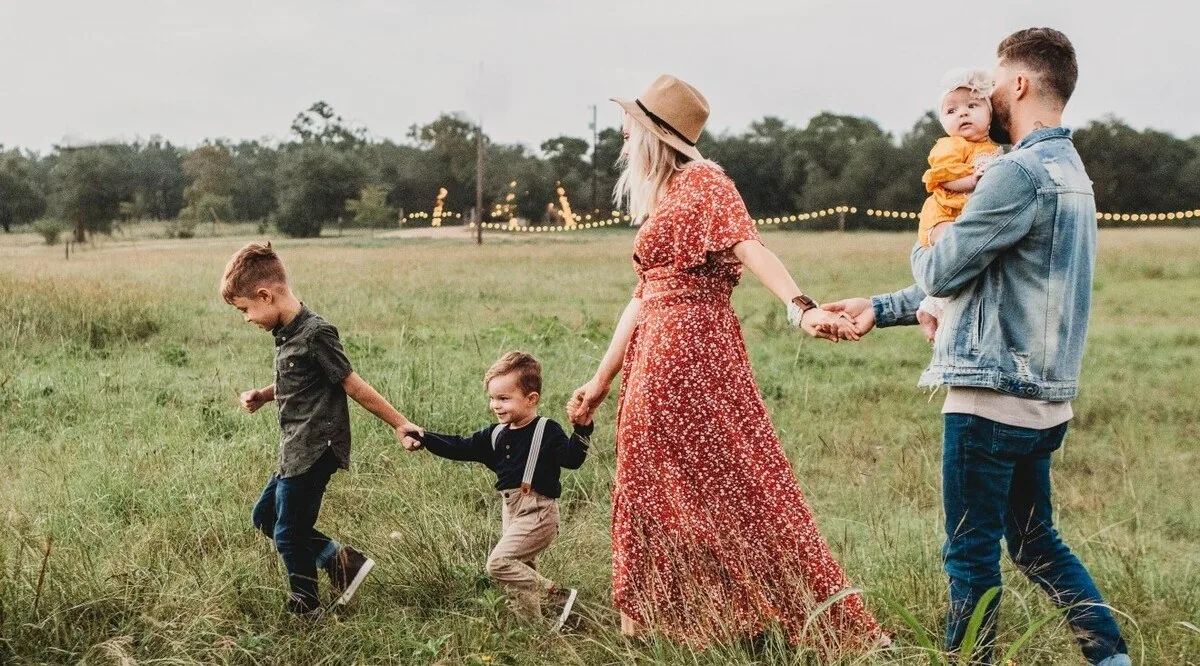If you are a parent with kids of any age, porn can be scary. Pornography is everywhere today. We’re all aware of it, and we all know how common it is to find free and easily accessible porn on the internet. For parents, this easy access to pornography creates a lot of anxiety and fear. What if my kids are watching porn? How will they handle it? What can I do to help or prevent this? Statistics suggest that porn is indeed reaching our children. The average age that children begin watching porn on a regular basis is often between the ages of 10 and 12. By 18, over 90% of all teenagers have watched or seen pornography. Despite attempting to use internet filters or monitor cell phone use, many parents are unaware of how common porn is on social media platforms or how often it is shared within friend groups.
But there is hope! Research has found there are several things you can do to protect your children from the dangers of pornography and increase the likelihood that when they come across porn, they toss it aside and never come back to it. This prevention starts with knowing how to talk to your children about pornography. This guide is meant to get you started on that path and give you a few tips and tricks that experts and researchers know can give your kids the best likelihood of avoiding porn by learning how to have open conversations about this important topic.

Know the Basics of Porn Parenting
As a parent, there are a few key things to understand about talking to your kids about porn. These facts and concepts that experts understand are critical for you to understand to give you the proper context for having this important conversation with your kids.
Here are some key things to consider:
- Your child is almost guaranteed to see porn at some point, your goal is not complete avoidance, but rather a healthy reaction.
While it would be great if all our children could completely avoid pornography, in today’s world it is often unrealistic. So, instead, you want to talk to your kids about how they will react when they encounter pornography in their life. - Almost all children will be naturally curious and excited by pornography.
Remember, attraction to other people is natural and important in healthy relationships. Your goal is not to shame your children for being attracted to the images in porn. Instead, help them understand how they can direct that natural attraction appropriately and how the porn industry wants to twist that natural attraction into something that will harm their future relationships. - Talking about sex and intimacy is often awkward for both the parent and child.
Talking about sex, including porn, with our kids can be awkward. That’s okay! While it may be awkward the first few times, the more you have open conversations with your children on this topic, the less awkward and more open these conversations will become.
There’s also some key parenting advice that you need to consider before having this porn talk with your kids. Let’s quickly talk about two types of parenting:
- Sheltering: This is where parents try to protect their children from things they want them to avoid by not talking about them and trying to limit exposure to whatever it is the parents want the kids to avoid. Again, the goal is to prevent the child from encountering or engaging in the situation.
- Pre-arming: This is where parents prepare their children for encountering the thing the parents are worried about or want their child to avoid. The goal is not entirely avoiding the behavior or situation but being prepared when the situation happens.
These two concepts are important because research has shown that pre-arming is a much more effective way to help children avoid negative and risky behaviors. This is your goal with porn! You want to pre-arm you kids to know what to do when they encounter pornography, not simply hoping they can avoid it forever. While some parents are worried that talking to their children about porn will make them more likely to think about porn and seek out porn, research suggests the opposite is true.


Know the Three First Steps
Now that you have a basic understanding of the key concepts involved in this conversation. Let’s talk about the next step. There are three critical steps you need to take before initiating this conversation with your child. Think of this as personal preparation for the conversation. This preparation needs to happen for the the most effective and meaningful conversation possible.
If you are a single parent, these three steps can be done individually. However, if you are married or in a relationship, we recommend you go through these three steps with your partner. We also recommend writing down your thoughts and reflections as you think about or talk about the issues below; these will become your key notes as you prepare to talk to your child about porn.
step 1
Decide what role you think sexual intimacy plays in healthy relationships.
Porn is closely tied to sex and the portrayal of sexual intimacy. When you talk to your kids about porn, you’re also talking to them about sexual intimacy. Because of this, it’s important to consider what messages you want to send your kids about the role and importance of sexual intimacy. Talking to your kids about porn should always be connected to these larger themes. For example, if you believe sexual intimacy should only happen within a marriage, that message should be connected to the message of avoiding porn when you talk to you kids.
step 2
Decide on three key personal definitions
To have a productive conversation with your kids about porn, you need to define for yourself and your family three key things related to sexual content your kids might come across:
Sexual messages: These are the pieces of content that are sexualized but not something you feel like your kids should or can avoid. Think advertisements for underwear or movies/videos where men or women might be dressed immodestly.
Inappropriate content: This is material that you feel is inappropriate for your child and want them to avoid but it's not what you would consider porn. Perhaps, based on your child’s age, this might be certain types of intimacy portrayed in a movie or certain types of videos online (maybe videos of women wearing bikinis).
Porn: While you may think everyone knows porn when they see it, what one person considers pornographic the next person might simply consider a steamy scene of intimacy. You need to decide where this line is for you and your children and clearly define it. That definition also helps your child understand what porn is (don’t just assume they know it when they see it).
These definitions are important because you need to create a culture in your family where everyone is on the same page when it comes to sexual messages and content. This needs to go beyond “don’t look at porn” and help you define and explain boundaries to your child.
step 3
Consider personal anxieties
Every parent has some personal anxiety and fear of talking to their kids about sexual topics. However, it would help to appear confident and knowledgeable to your children when you have these conversations. Take some time to consider and reflecting on your own anxieties before you have this conversation. Practice the conversation with other adults first if you need to. You want your kids to trust you and come to you with questions! They will only do that if you appear confident! Work through your personal fear and anxieties as much as you can before you have the conversation.


Having The Porn Talk
It’s time to have the talk! Here are some tips and guidance for how to have the most productive conversation possible.
Preparation
Don’t skip the first two steps! Make sure you’ve completed the three first steps outlined above. Also make sure you understand the basics of porn parenting and the concepts explained at the beginning of this guide. If you have any personal questions, get more resources and more information. Most of all, mentally prepare for the conversation. Remember, this conversation doesn’t need to be scary! This is a chance to talk to your child about a critical part of their life and future. It’s a chance to connect and show them love and establish a better and more open relationship with them! Doing this will improve, not hurt your relationship! Be optimistic about it.
Planning
A little planning goes a long way. Here are key decisions you should make as you plan out the conversation.
- Decide on a time and location. This location ideally would be your home. Make sure to set enough time aside for any questions your child has. Try to avoid public places where you or your child might be uncomfortable having this type of conversation. Also be aware that your child may not feel comfortable having this conversation around other siblings.
- If having the conversation with your partner or co-parent, create a plan for who will talk about what.
- Make sure to plan on time for questions and thoughts from your child. This discussion shouldn’t be a lecture! Make this a two-way conversation. Listen to your child’s question and concerns. Make sure to address each one. Plan to ask your child several times if they have any questions or thoughts (it’s okay if the answer is no, but make sure they know they have the opportunity to ask).
- Give your child a heads-up. Don’t spring this topic on them out of the blue. Tell them you want to have a conversation about porn and other sexual content with them. Be clear this isn’t because you want to interrogate them. Tell them you want to talk about it because it’s so common and you want to have an open conversation.
Execution
Once you sit down to have the conversation with your child, use the guided conversation sequence below to help facilitate a productive discussion.
- Open by explaining why you want to have the conversation. Mention how common porn is and how prevalent it is. Based on the child’s age, you may frame this discussion based on content they are likely to encounter in the future or content they may see or encounter now.
- Explain that your main goal is to help them understand your expectations and perspective on porn and give them a chance to ask any questions they have. Emphasize that you want them to come to you with questions about this topic!
- Give your child your definitions for sexual messages, inappropriate content, and porn.
- Tie these expectations back to your views and beliefs about broader sexual intimacy. Explain that you want your child to have a fulfilling and happy life, including happy relationships and good intimacy in their relationship with a future partner. Explain how avoiding porn will help them achieve this. Remember sex isn’t what you want your child to fear or think negatively about, it’s porn! Help them see the difference.
- With your child, discuss a plan for what they will do when they encounter either inappropriate content or porn. Be specific. Make sure part of that plan involves talking to you. This is a good time to explain the difference between porn and other types of inappropriate content.
- With your child, set goals around avoiding porn and inappropriate content. Make these goals focus on both what they will not do and what they will do.
- Set a time for a follow-up conversation. Based on the age and specific circumstances of your child, this might be in a week, a month, or several months down the road.
Moving Forward
Great job if you’ve gotten this far! Remember a final few things:
- This is the first of many talks: Don’t let this be a one and done conversation. Make it the first of many conversations you have with your child.
- Monitoring is still important: Having a conversation should not be the only thing you do to help your child avoid porn. Continue (or start) monitoring their online activity. Consider investing in strong filtering and internet monitoring systems. Avoid giving young children and young teens unlimited access to cell phones and computers. Be invested in your child’s safety in both your actions and your communication.